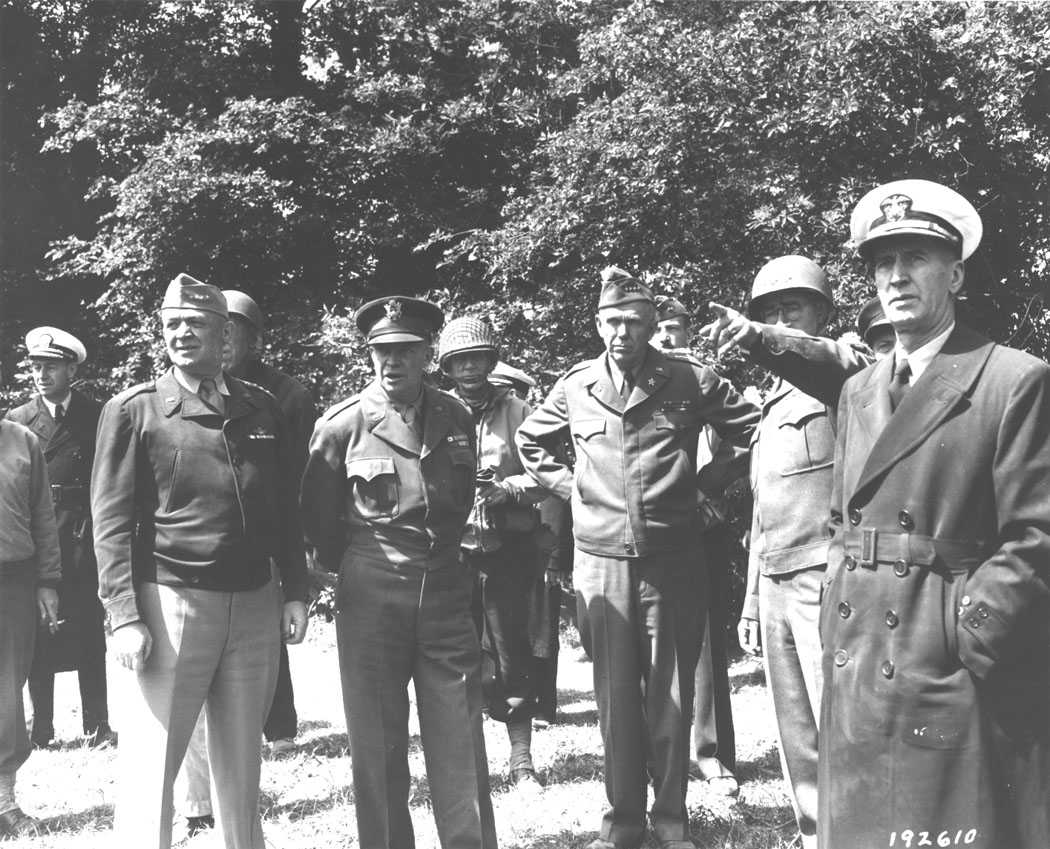On December 16, 1944, General George C. Marshall became the first army officer to be promoted to the newly created five-star rank. Only nine army and navy officers have been selected for promotion to this distinguished rank. They were:
Admiral William D. Leahy, Chair of the Chiefs of Staff: (December 15, 1944)
General George C. Marshall: (December 16, 1944)
Admiral Ernest J. King: (December 17, 1944)
General Douglas MacArthur: (December 18, 1944)
Admiral Chester W. Nimitz: (December 19, 1944)
General Dwight D. Eisenhower: (December 20, 1944)
General Henry H. Arnold: (December 21, 1944)
Admiral William F. Halsey: (December 11, 1945)
General Omar N. Bradley: (September 20, 1950)
The idea for the 5-star rank was first proposed to General Marshall by Admiral King in a message dated November 17, 1942. King wrote, “We should also recognize the fact that there is need to prepare for ranks higher than that of Admiral and General. As to such ranks, I suggest Arch-Admiral and Arch-General, rather than Admiral of the Fleet and Field Marshal.” In his reply on November 30th, Marshall wrote:
“As to the higher rank, for which you suggest some titles such as Arch-Admiral and Arch-General, I do not think it would be wise for us to submit such a proposal. In the first place, it would involve the immediate implication that we are proposing something for our own personal advancement. Also, I believe that neither our legislators not the American people would react at all favorably to the creation of what to them would be an exalted military rank.”
The often repeated rumor than General Marshall was opposed to the creation of the five-star rank because he would be called Field Marshal Marshall is also untrue. In an interview with his biographer, Dr. Forrest C. Pogue, Marshall stated:
“I didn’t want any promotion at all. I didn’t need it. The Chiefs of Staff on the British side were already field marshals so they would be senior to me whatever I was made. I didn’t think I needed that rank and I didn’t want to be beholden to Congress for any rank or anything of that kind. I wanted to be able to go in there with my skirts clean and with no personal ambitions concerned in it in any way, and I could get all I wanted with the rank I had. But that was twisted around and somebody said I didn’t like the term marshal because it was the same as my name. I know Mr. Churchill twitted me about this in a rather scathing tone. I don’t recall that I ever made the expression. But my reason for not wanting it was that I felt that it was much better that I personally shouldn’t be beholden to anything for Congress except for fair treatment which they gave me.”
The Navy persisted in its efforts to create the 5-star rank and in December 1944 legislation was passed that permitted the appointment of eight five-star positions. Four of the appointments were given to the army and four were given to the navy.
President Harry Truman signed a law on March 23, 1946, making the promotions permanent. Each five-star officer was permitted to keep an office in the Pentagon until his death, as theoretically he was on permanent active duty.
The permanent active duty designation caused problems for General Marshall on several occasions. Marshall submitted requests to be taken off the active list while serving as secretary of state, and later as secretary of defense. When Marshall no longer held these offices he was once again returned to the active duty list.
The five-star rank still exists, although U.S. military policy regarding the rank is to only award it when a commander of U.S. forces must be equal to or of higher rank than commanders of armies from other nations under his control. Since General Omar Bradley’s death in 1981, no officer in the U.S military has held the five-star rank.
If you like reading our blogs, please support us by becoming a member of the Foundation or making a donation.

